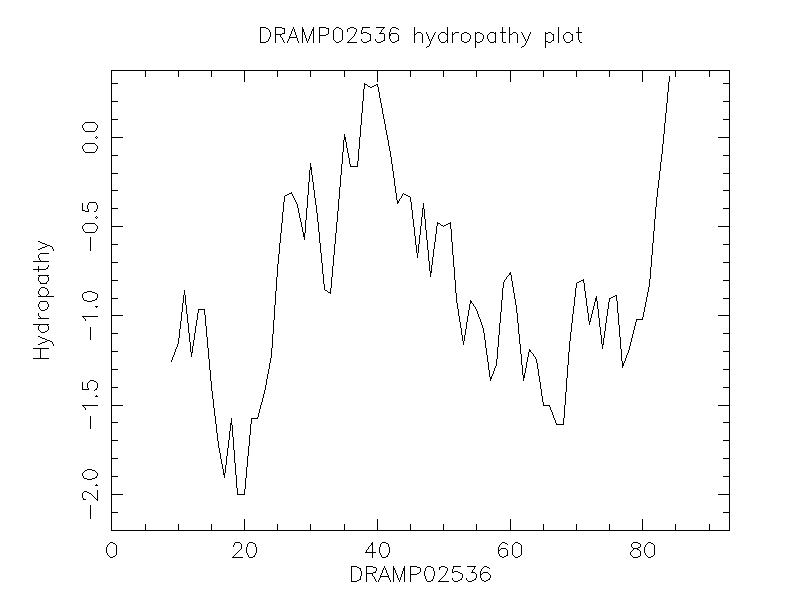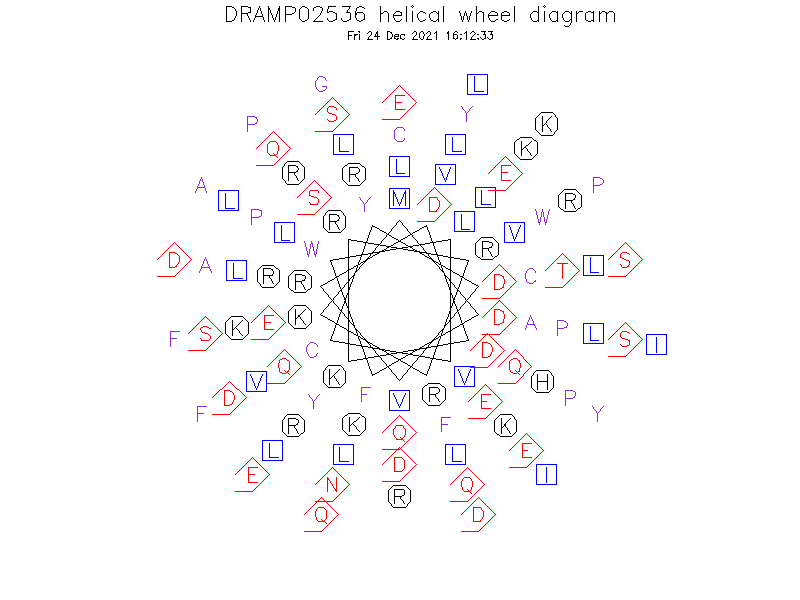General Information
-
DRAMP ID
- DRAMP02536
-
Peptide Name
- CRISPR-associated endoribonuclease Cas2 2 (Antiviral defensin)
-
Source
- Synechocystis sp. (strain PCC 6803 / Kazusa)
-
Family
- Belongs to the CRISPR-associated endoribonuclease Cas2 prote
-
Gene
- cas2-2
-
Sequence
- MDFWLVCYDVRDDKRRRKLAKLLEQRCQRVQYSVFECPLPEKVLTDLLHRRWLKELNLKEDSLRAYPLQRQSRSQAKIFGSPDLYEPPDFLIL
-
Sequence Length
- 93
-
UniProt Entry
- Q6ZEC6
-
Protein Existence
- Homology
Activity Information
-
Biological Activity
- Antimicrobial, Antiviral
-
Target Organism
- No MICs found in DRAMP database
-
Hemolytic Activity
-
- No hemolysis information or data found in the reference(s) presented in this entry
-
Cytotoxicity
-
- Not included yet
-
Binding Target
- Metal-binding
Structure Information
-
Linear/Cyclic
- Not included yet
-
N-terminal Modification
- Not included yet
-
C-terminal Modification
- Not included yet
-
Nonterminal Modifications and Unusual Amino Acids
- Not included yet
-
Stereochemistry
- Not included yet
-
Structure
- Not found
-
Structure Description
- Not found
-
Helical Wheel Diagram
-
PDB ID
- None
-
Predicted Structure
- There is no predicted structure for DRAMP02536.
Physicochemical Information
-
Formula
- C511H812N144O139S4
Absent Amino Acids
- ?
Common Amino Acids
- L
Mass
- 11325.19
PI
- 9.12
Basic Residues
- 19
Acidic Residues
- 14
Hydrophobic Residues
- 32
Net Charge
- +5
-
Boman Index
- -240.36
Hydrophobicity
- -0.628
Aliphatic Index
- 94.3
Half Life
-
- Mammalian:30 hour
- Yeast:>20 hour
- E.coli:>10 hour
Extinction Coefficient Cystines
- 17085
Absorbance 280nm
- 185.71
Polar Residues
- 15
DRAMP02536

Comments Information
Function
- CRISPR (clustered regularly interspaced short palindromic repeat), is an adaptive immune system that provides protection against mobile genetic elements (viruses, transposable elements and conjugative plasmids). CRISPR clusters contain sequences complementary to antecedent mobile elements and target invading nucleic acids. CRISPR clusters are transcribed and processed into CRISPR RNA (crRNA). Functions as a ssRNA-specific endoribonuclease (By similarity).
Literature Information
- ·Literature 1
-
Title
- Structural analysis of four large plasmids harboring in a unicellular cyanobacterium, Synechocystis sp. PCC 6803.
-
Pubmed ID
- 14686584
-
Reference
- DNA Res. 2003 Oct 31;10(5):221-228.
-
Author
- Kaneko T, Nakamura Y, Sasamoto S, Watanabe A, Kohara M, Matsumoto M, Shimpo S, Yamada M, Tabata S.

